 W
W1st Maryland Cavalry Battalion, Potomac Home Brigade, originally organized as the 1st Potomac Home Brigade Cavalry, "Cole's Cavalry" was formed under the guidance of Henry A. Cole. There are also references to it being designated as Cole's 1st Volunteer Maryland Cavalry. The unit, a battalion, originally consisted of four companies, A, B, C & D and was initially enlisted between August 10 and November 27, 1861.
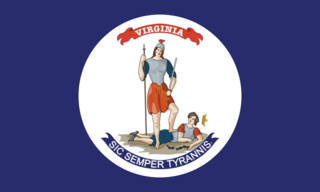 W
WThe 7th Virginia Cavalry Regiment also known as Ashby's Cavalry was a Confederate cavalry regiment raised in the spring of 1861 by Colonel Angus William McDonald The regiment was composed primarily of men from the counties of the Shenandoah Valley as well as from the counties of Fauquier and Loudoun. Two companies contained men from the border counties of Maryland.
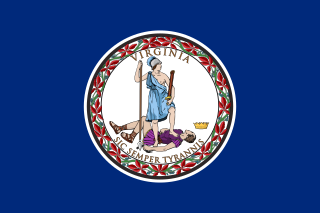 W
WThe 8th Virginia Infantry Regiment was a Confederate infantry regiment raised by Colonel Eppa Hunton in Leesburg, Virginia on May 8, 1861. The unit comprised six companies from Loudoun, two companies from Fauquier, one company from Fairfax and one company from Prince William. Initial regimental officers included: Lt. Colonel Charles B. Tebbs, Major Norborne Berkeley, John M. Orr - Quartermaster, Dr. Richard H. Edwards - Surgeon, Charles F. Linthicum - Chaplain. After Eppa Hunton's promotion to brigadier general in August 1863, in part based on his valor during the Battle of Gettysburg, particularly during Pickett's Charge, Norborne Berkeley was promoted to command the 8th Virginia, and his brother Edmund became the Lieut. Colonel, his brother William Berkeley, Major, and Charles Berkeley became the senior Captain of what then became known as the "Berkeley Regiment."Nonetheless, Norborne, William and Charles Berkeley were all in Union prisoner of war camps and their brother Edmund still recovering from his Gettysburg wound on August 9.
 W
WThe 35th Virginia Cavalry Battalion, also known as White's Battalion, White's Rebels and the Comanches, was a Confederate cavalry unit during the American Civil War raised by Elijah V. White in Loudoun County, Virginia in the winter of 1861-62. The battalion was initially raised as border guards along the Potomac River below Harpers Ferry but were ultimately mustered into regular service as part of the Laurel Brigade. Despite this, they continued to play a conspicuous role in the ongoing partisan warfare in Loudoun throughout the war. The battalion was particularly notable during the 1863 Gettysburg Campaign, when it played a prominent role in the Battle of Brandy Station and subsequently conducted a series of raids on Union-held railroads and defensive positions in Maryland and Pennsylvania. The 35th was the first Confederate unit to enter Gettysburg, Pennsylvania.
 W
WThe 43rd Virginia Cavalry Battalion, also known as Mosby's Rangers, Mosby's Raiders, or Mosby's Men, was a battalion of partisan cavalry in the Confederate Army during the American Civil War. Noted for their lightning strike raids on Union targets and their ability to consistently elude pursuit, the Rangers disrupted Union communications and supply lines.
 W
WThe action at Mount Zion Church was a cavalry skirmish during the American Civil War that took place on July 6, 1864. The skirmish was fought between Union forces under Major William H. Forbes and Confederate forces under Colonel John S. Mosby near Aldie in Loudoun County, Virginia as part of Mosby's Operations in Northern Virginia. After successfully raiding the Union garrison at Point of Rocks, Maryland, Mosby's Rangers routed Forbes's command, which had been sent into Loudoun County to engage and capture the Rangers. The fight resulted in a Confederate victory.
 W
WThe Affair at Glenmore Farm was a small cavalry skirmish that took place October 16, 1862 in Loudoun County, Virginia between Confederate forces under First Lieutenant Frank Myers and Union forces under General John Geary during the American Civil War. The skirmish resulted in a Union victory.
 W
WThe Battle of Aldie took place on June 17, 1863, in Loudoun County, Virginia, as part of the Gettysburg Campaign of the American Civil War.
 W
WThe Fight at Aldie was a small cavalry skirmish between Confederate forces under Major John S. Mosby and Union forces under Major Joseph Gilmore and Captain Franklin T. Huntoon in Aldie, Virginia, on March 2, 1863, as part of Mosby's Operations in Northern Virginia during the American Civil War. The fight which resulted in a Confederate victory was significant in that it was the first action of Mosby's Rangers within their operating territory in the central Loudoun Valley. In the fight Mosby and his men displayed many characteristics that would become their hallmark including the attack on numerically superior force while inflicting disproportionate casualties to those received.
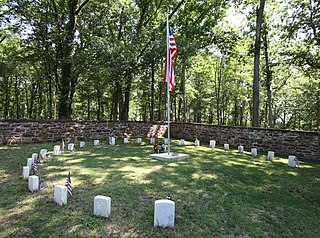 W
WBall's Bluff Battlefield Regional Park and National Cemetery is a battlefield area and a United States National Cemetery, located 2 miles (3.2 km) northeast of Leesburg, Virginia. The cemetery is the third smallest national cemetery in the United States. Fifty-four Union Army dead from the Battle of Ball's Bluff are interred in 25 graves in the half-acre plot; the identity of all of the interred except for one, James Allen of the 15th Massachusetts, are unknown. Monuments to fallen Confederate Sergeant Clinton Hatcher and Union brigade commander Edward Dickinson Baker are located next to the cemetery, though neither is buried there. While the stone wall-enclosed cemetery itself is managed through the Culpeper National Cemetery and owned by the Department of Veterans Affairs, the balance of the 223-acre (0.90 km2) park is managed through the Northern Virginia Regional Park Authority.
 W
WThe Battle of Ball's Bluff was an early battle of the American Civil War fought in Loudoun County, Virginia, on October 21, 1861, in which Union Army forces under Major General George B. McClellan suffered a humiliating defeat.
 W
WThe Burning Raid was a Union raid conducted in the Loudoun Valley of Loudoun and Fauquier counties in Virginia in November and December 1864 during the American Civil War. It was aimed at destroying the forage on which Confederate partisans operating in the area, specifically Mosby's Rangers, subsisted as well as at breaking the will of the citizens of the area for supporting the partisans.
 W
WRobert Hall Chilton was an officer in the U.S. Army and then a brigadier general in the Confederate States Army during the American Civil War. He served as Chief of Staff for the Army of Northern Virginia under Robert E. Lee for much of the war.
 W
WThe Battle of Dranesville was a small battle during the American Civil War that took place between Confederate forces under Brigadier General J. E. B. Stuart and Union forces under Brigadier General Edward O. C. Ord on December 20, 1861, in Fairfax County, Virginia, as part of Major General George B. McClellan's operations in northern Virginia. The two forces on similar winter time patrols encountered and engaged one another in the crossroads village of Dranesville. The battle resulted in a Union victory.
 W
WThe Second Battle of Dranesville, also known as the Ambush at Anker's Shop, was a small cavalry skirmish that took place between Confederate forces under Colonel John Mosby and Union forces under Captain James Sewall Reed east of Dranesville, Virginia in Loudoun County near present day Sterling on February 22, 1864 as part of Mosby's operations in Northern Virginia in the American Civil War. After successfully defending a raid into "Mosby's Confederacy" by Cole's Maryland Cavalry, the following day Mosby led his Rangers against a second raid by Reed. The action resulted in a Confederate victory.
 W
WColonel Richard Henry Dulany was an American equestrian.
 W
WThe Harmony Skirmish was a small engagement of the American Civil War between Confederate forces under Colonel John Mosby and Union forces under Colonel Marcus Reno on March 21, 1865 near the village of Harmony in Loudoun County, Virginia. A union raiding party, that was sent into Loudoun County to eliminate Confederate partisans, was ambushed by Mosby's Rangers near the village of Harmony. After inflicting light casualties on the Federals, the Rangers were unable to drive off the numerically superior and better equipped force and were compelled to withdraw. The skirmish, which was the last major action of the war within Loudoun, was tactically inconclusive.
 W
WHarpers Ferry National Historical Park, originally Harpers Ferry National Monument, is located at the confluence of the Potomac and Shenandoah rivers in and around Harpers Ferry, West Virginia. The park includes the historic center of Harpers Ferry, notable as a key 19th-century industrial area and as the scene of John Brown's failed abolitionist uprising. It contains the most visited historic site in the state of West Virginia, John Brown's Fort.
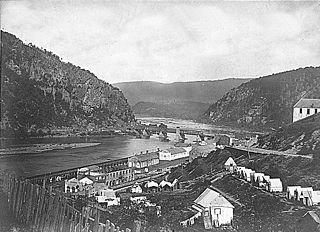 W
WThe Battle of Harpers Ferry was fought September 12–15, 1862, as part of the Maryland Campaign of the American Civil War. As Gen. Robert E. Lee's Confederate army invaded Maryland, a portion of his army under Maj. Gen. Thomas J. "Stonewall" Jackson surrounded, bombarded, and captured the Union garrison at Harpers Ferry, Virginia.
 W
WHeaton's Crossroads, also known as the Purcellville Wagon Raid, was an American Civil War skirmish that took place between Federal cavalry under Brig. Gen. Alfred N. Duffié and Confederate infantry under Maj. Gen. John C. Breckinridge on July 16, 1864, near present-day Purcellville, Virginia in Loudoun County as part of the Valley Campaigns of 1864. The action was tactically inconclusive.
 W
WJohn Janney was an influential member of the Whig Party in Virginia prior to its demise, delegate to the Virginia General Assembly from Loudoun County and served as President of the Virginia Secession Convention in 1861.
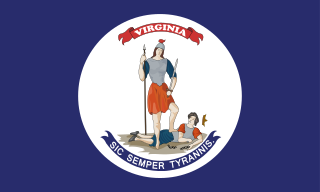 W
WThe Loudoun Rangers, also known as Mean's Rangers for their commander, Samuel C. Means, was a partisan cavalry unit raised in Loudoun County, Virginia, that fought for the Union during the American Civil War. The Rangers have the distinction of being the only unit raised in present-day Virginia to serve in the Union Army.
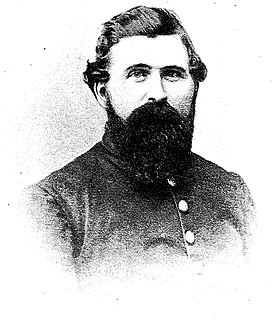 W
WSamuel Carrington Means (1828–1891) was the founder and first captain of the Loudoun Rangers, a Union Army unit from Virginia that served during the American Civil War.
 W
WThe Battle of Middleburg took place from June 17 to June 19, 1863, in Loudoun County, Virginia, as part of the Gettysburg Campaign of the American Civil War.
 W
WThe Battle of Mile Hill was a cavalry skirmish during the American Civil War, that took place just north of Leesburg, Virginia, on September 2, 1862. It preceded the occupation of the town by the Army of Northern Virginia just prior to its crossing of the Potomac River starting the Maryland Campaign.
 W
WThe Skirmish at Miskel Farm, also known as the Fight at Miskel Farm or Gunfight at Miskel Farm, was a skirmish during the American Civil War. It took place April 1, 1863, near Broad Run in Loudoun County, Virginia, between Mosby's Rangers and the 2nd Pennsylvania Cavalry as part of Mosby's operations in Northern Virginia. The 2nd Pennsylvania surprised and attacked the Rangers, who were bivouacked on the farm of Thomas Miskel. The Rangers successfully defended the attack and subsequently routed the 2nd Pennsylvania, inflicting heavy casualties and taking many prisoners.
 W
WJohn W. Mobberly, also known as John Mobley or Morbly, was a Confederate guerrilla who operated in the Loudoun Valley and Between the Hills region of Loudoun County, Virginia during the American Civil War. He also served as regular soldier in Elijah V. White's 35th Battalion, Virginia Cavalry, nicknamed the "Comanches." Mobberly is sometimes reported as serving under John Mosby, although this is not grounded in fact. His legacy is surrounded in controversy as Federal soldiers and Union sympathizers in Loudoun County accused him of committing war atrocities, including slave-rustling, while pro-Southern Loudoun residents claimed him to be a hero, second only to Mosby in local popularity.
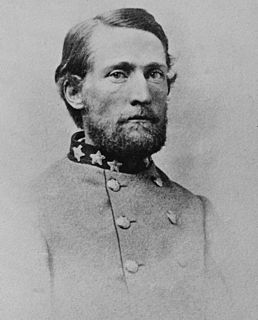 W
WJohn Singleton Mosby, also known by his nickname, the "Gray Ghost", was a Confederate army cavalry battalion commander in the American Civil War. His command, the 43rd Battalion, Virginia Cavalry, known as Mosby's Rangers or Mosby's Raiders, was a partisan ranger unit noted for its lightning-quick raids and its ability to elude Union Army pursuers and disappear, blending in with local farmers and townsmen. The area of northern central Virginia in which Mosby operated with impunity was known during the war and ever since as Mosby's Confederacy. After the war, Mosby became a Republican and worked as an attorney, supporting his former enemy's commander, U.S. President Ulysses S. Grant. He also served as the American consul to Hong Kong and in the U.S. Department of Justice.
 W
WTemple Hall is an early 19th-century Federal-style mansion and working farm near the Potomac River north of Leesburg in Loudoun County, Virginia.
 W
WThe Battle of Unison or Battle of Union refers to a series of American Civil War cavalry skirmishes in Loudoun County, Virginia, between October 31 – November 2, 1862, between the Confederate forces of J.E.B. Stuart and various units of the Union Army of the Potomac. Although driven from the field in individual engagements, Stuart accomplished his mission to delay the enemy and screen the movements of the retreating Army of Northern Virginia.
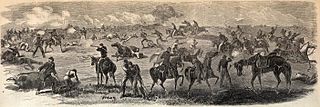 W
WThe Battle of Upperville took place in Loudoun County, Virginia on June 21, 1863 during the Gettysburg Campaign of the American Civil War.
 W
WVirginia became a prominent part of the Confederacy when it joined during the American Civil War. As a Southern slave-holding state, Virginia held the state convention to deal with the secession crisis, and voted against secession on April 4, 1861. Opinion shifted after April 15, when U.S. President Abraham Lincoln called for troops from all states still in the Union to put down the rebellion, following the capture of Fort Sumter. The Virginia convention voted to declare secession from the Union on April 17. A Unionist government was established in Wheeling and the new state of West Virginia was created by an act of Congress from 50 counties of western Virginia, making it the only state to lose territory as a consequence of the war.
 W
WThe Fight at Waterford was a small skirmish during the American Civil War that took place in Waterford, Virginia on August 27, 1862 between the local partisan cavalry units of White's Rebels, fighting for the Confederates, and the Loudoun Rangers fighting for the Union. The Rebels surprised and routed the newly formed Loudoun Rangers in their camp at Waterford, capturing nearly the whole unit before subsequently paroling them, thus resulting in a Confederate victory. The action was the first significant partisan fighting in Loudoun County.
 W
WElijah Viers "Lige" White was commander of the partisan 35th Battalion of Virginia Cavalry during the American Civil War. His men became commonly known as "White's Comanches" for their war cries and sudden raids on enemy targets.
 W
WWhite's Ford was an important ford over the Potomac River during the American Civil War. It was used in many major actions, including the crossing into Maryland of the Confederate army prior to the Maryland Campaign and Confederate Major General J.E.B. Stuart's ride around Union Major General George B. McClellan on October 10, 1862, when he used the ford to cross into Loudoun County, Virginia. It is located a few miles above present-day White's Ferry.